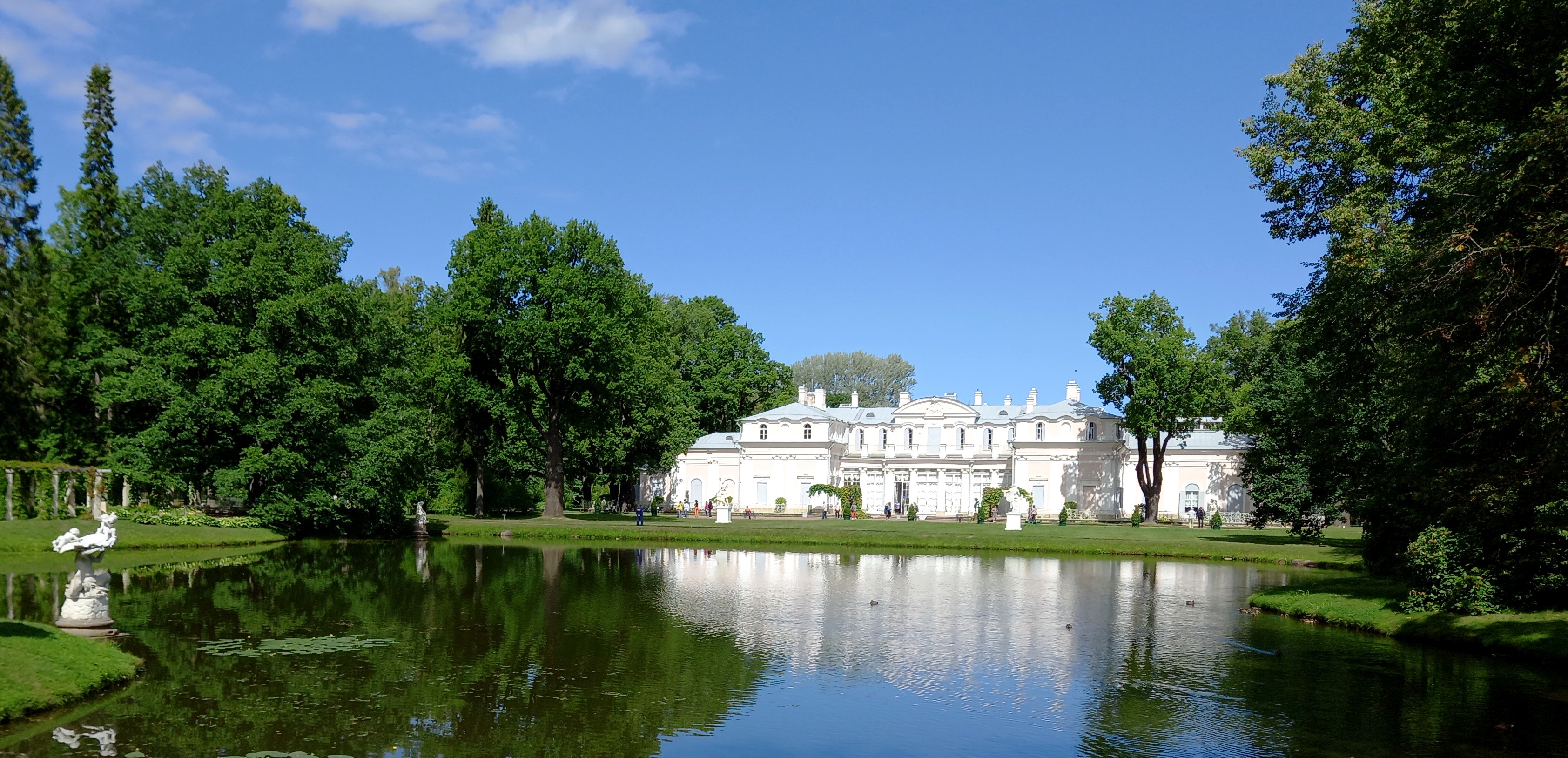Main page Tours and offers Visa-free tours About Saint-Petersburg Contacts
N.B. Please find actual information about my tours on my new web-site Your guide in St Petersburg!
Oranienbaum.
This suburb is located 40 km west of St. Petersburg, not far from Peterhof. In the beginning of the 18th century Oranienbaum became the residence of Alexander Menshikov. However not only Menshikov was the owner of this lands. Several years later after his proscription, the residence was presented to the official successor of the Empress Elizabeth I, Grand Duke Peter Fedorovich (future Peter III) and his wife Catherine (future Catherine the Great). Anyway in 19th century Oranienbaum became a noble manor. During the WW II only Oranienbaum and Kronstadt were not occupied and destroyed by the Nazi so you can see park and palace pristine beauty. Restoration to Oranienbaum has been a slow process. Tsarskoe Selo and Peterhof restorations were given higher priority, and that is one reason Oranienbaum is a less-visited attraction.

In 1707, four years after the foundation of Saint Petersburg, Peter the Great gave the grounds near the seaside to his right-hand man, Alexander Menshikov just in front to the Kotlin island. Menshikov was responsible for the construction of the Kronstadt fortress and Saint-Petersburg.
Menshikov commissioned the architects Giovanni Maria Fontana and Gottfried Schädel, who built his residence, the Grand Menshikov Palace from 1710 to 1727 (not to be confused with Menshikov Palacein Saint Petersburg, built by the same architects around the same time). The central part of the Palace is connected by two galleries with the two domed Japanese and Church Pavilions. The Lower Garden, decorated with fountains and sculptures, and the Upper Garden were laid out at the same time. The Palace is located near the Lower Park, whose composite axis is a channel leading to the sea. This channel is in imitation of one designed by Peter himself at his nearby residence of Peterhof Palace.
After Menshikov's death, Oranienbaum passed to the state, and was used as a hospice until, in 1743, it was presented by Empress Elizabeth to her nephew, the future Peter III. Peter made Oranienbaum his official summer residence and transformed one corner of the park, ordering the construction of a "Joke" Castle and a small citadel manned by his Holstein guards. This peculiar ensemble, called Petershtadt, was mostly demolished during Pavel's reign. Antonio Rinaldi, the Italian-born architect who also designed the Grand Palaceat Gatchina and the Marble Palacein St. Petersburg, was commissioned by Peter in 1758 to build a modest stone palace next to the fortress, and this has survived.
June 28, 1762. This date became a fatal for Peter III. After a palace coup he was arrested and his wife Catherine was proclaimed as the Russian Empress Catherine II. A new page in the history of Oranienbaum was opened. Part of the lands bordered with the park from the West was a personal manor of Catherine from the middle of the 18th century. The Chinese palace was created by Antonio Rinaldi. It is a gem of Oranienbaum.

From the outside, the palace is a relatively simple building, single-storey except for the small central pavilion, painted in a mellow combination of ochre and yellow. The seventeen rooms inside, decorated by Rinaldi and other leading artists and craftsmen of the day, feature pink, blue and green scagliola, painted silks, and intricate stucco work. Rinaldi's parquet floors are wonderfully ornate, using several types of rare Russian and imported wood. Among the highlights of theChinesePalaceinteriors are the Glass Beaded Salon, the walls of which are hung with 12 panels of richly coloured tapestries depicting exotic birds and fauna. The fine white glass beads that form the backdrop of the tapestries give the whole room a diaphanous, shimmering quality that was designed to be particularly effective in the glowing twighlight of the White Nights. The full influence of Chinoiserie is in evidence in the gaudy Large Chinese Salon, where the walls are covered with marquetry paneling of wood and walrus ivory depicting oriental landscapes, and large Chinese lanterns hanging in the corners. The room also contains an English-made billiard table with superb wood carving.





